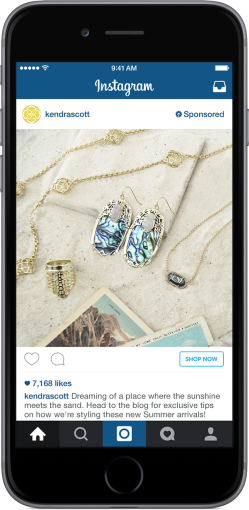Erik Qualman's Blog, page 539
June 4, 2015
Social Media Spearheading the Rise of Social Gaming


When Facebook first emerged in 2005, few could have imagined that it would have grown to develop such a diverse range of features. Its emergence as a pivotal business marketing tool is particularly surprising, even when you consider its reach and the influence that it has on consumers from around the world. Perhaps even more puzzling is the success of social gaming, which has grown from a niche market into a lucrative entity that is expected to dominate the remote gaming industry in 2015.

So why has social gaming developed into such a popular and lucrative concept? One of the main reasons is its accessibility, as the business model that underpins social gaming is diametrically opposed to the traditional console alternative. While console gamers are forced to play significant amounts of money to procure a platform and individual titles, social gaming offers free to access experiences and affords players the flexibility to spend how and when they choose. Given the way in which technology has helped to inflate consumer expectations and create a more demanding mind-set, social gaming is perfectly placed to thrive.
In addition to this, social gaming has also been empowered by the rise of mobile. Devices such as smartphones and tablets have increased capabilities in the modern world, meaning that they are often used to access gaming platforms that offer online casino games, for an example. The nature of social gaming is ideally suited to this platform, especially in terms of its level of interactivity and engagement. So as the technology behind mobile platforms and operating systems such as Android or iOS continues to improve, social gaming will become increasingly diverse and also cater to a wider demographic.

In terms of 2015 and the immediate future, we can expect the boundaries between social and mobile gaming to become increasingly blurred. This will see a number of games similar to Texas Hold ‘em poker emerge on sites such as Facebook, as developers focus on the level of interaction associated with gambling experiences rather than the pursuit of monetary gains.
In the longer term, the influence of three-dimensional and virtual reality technology will also impact on social gaming. More specifically, it will enable players to enjoy an incredibly interactive and free to access gaming experience, and arguably render console platforms increasingly obsolete over the course of the next decade.
[image error]
Get Social and Fit By Cleaning Up Your Yard

It’s almost summer time and there’s more to do.
Kids are home, you’ve got work and more meals to cook, more laundry to do. Time to get to the gym may be elusive as the proverbial pot of gold at the end of the rainbow.
But there are other ways to get your workout in and stay fit.
You may not realize it, but yard work can be a great work out.
Ready to Get Your Hands Dirty?
Who knew that weeding the yard or mowing the lawn can burn as many calories as the same time on the treadmill? Plus, you’re getting a good healthy dose of sunshine, which means vitamin D.
So you’re ready to get down and dirty with some weeding and digging.
How do you make the best of this practical, efficient, get it all done workout?
As the article “Skip the gym and do some yard work: The ultimate workout” looks at, there are a number of options at your fingertips.
Among them:
• Let social media be your guide – Believe it or not, you can find great information on burning calories doing yard work via social media. From fitness magazines online, like Shape, to home improvement social media, like Home Depot’s blog for DIY ideas, you’ll have information at your fingertips. Use Twitter – just search yard work and fitness and you’ll find great ideas for incorporating yard work into your workout. You might be surprised how much is out there. Pinterest has beautiful inspiration for any project you’re interested in, and you can find boards dedicated to gardening and its fitness and mental benefits. Go social with this!
• Skip the power tools – Push your lawnmower, don’t ride it. Use manual trimming tools, not power. Think how great your arms will look after 30 minutes of trimming bushes with manual clippers! You’ll work your whole body pushing a lawn mower, especially if you have any hills in your yard.
• Embrace heat – If you want, do the yard work during the hot hours of the day instead of cool. You’ll sweat more, which is cleansing and detoxifying. Be sure to drink lots of water, though, or you’ll get dehydrated.
• Year round – Yard work isn’t just for the summer months. Raking is great for the core and planning is great for legs and arms.
• Social media again – You can even post your accomplishments, both on your yard and yourself on social media. This way can track your fitness and home improvement, while sharing your endeavors with your friends and followers.
Whether you love yard work or look at it as a chore, embrace it and know you’re doing something great for yourself. You can even enlist your family and get them working out, too.
If you’re stumped for inspiration or ideas, check out social media. It’s all there! You’ll be improving not only your yard’s appearance, but your own at the same time.
Happy yard work and be sure to drink your water!
Photo credit: Image courtesy of nipitphand at FreeDigitalPhotos.net
[image error]
June 3, 2015
Instagram Beefs Up Ads With App Install And Buy Buttons, Interest Targeting, API

TechCrunch – Instagram is ready to make some serious money. After a year and half of format experiments and basic targeting, Instagram is giving advertisers much more powerful tools. Those include “Shop Now”, “Install Now”, and “Sign up” buttons, interest and demographic targeting, and an API for efficiently managing huge campaigns.
Since their launch in October 2013, Instagram’s ads were best for big brands who just wanted you to remember them. Now they’ll work much better for direct marketers who want you to do or buy something. The API will let ad agencies easily spend more, and interest targeting based on who you follow on Instagram and Like on Facebook could let the photo network compete with Twitter’s Interest Graph for ad dollars.

Image from TechCrunch
For Instagram users, the most obvious change will be the new formats. They’re called “action-oriented” formats, and they’ll appear as buttons below an image. As you can see in the mock-ups above, they’ll give you the option to buy a product, install an app or sign up for a service.
This builds on the multi-photo carousel ads that Instagram unveiled earlier this year, which also included a “Learn More” button — the first time that Instagram ads became clickable. It’s worth noting that the buttons don’t take you away from Instagram completely. Instead, they open a mini-browser within the app, so once you’re done buying or downloading or what have you, you’ll be returned to Instagram.
Instagram has historically tried to keep users in its app, which is why it won’t allow its photos to appear in-line on Twitter. Its Global Head of Business and Brand Development James Quarles tells me it’s trying to uphold that philosophy of a smooth, straightforward browsing experience. “Instagram is not an index or collection of the web where syndicated links matter, it’s about photos people take. You’re not retweeting, regramming, or passing a link on” Quarles tells us. “In these cases where there are businesses…we think that it’s a very lightweight experience to go into an in-app browser…and then come back to the app. We’re staying true to the values of simplicity.”
What about Instagram actually processing ecommerce payments inside its app the way Facebook is testing? “We’re not announcing in-app commerce today” Quarles says. Still, he admits “we’re watching the space closely. We want to help reduce the friction from the point of inspiration to transaction.”
As with all of today’s announcements, Instagram plans roll the new formats out gradually, starting with a test later this week in Spain.
The new targeting, meanwhile, also expands on the existing connection between Instagram ads and the user data in Facebook (which owns Instagram). Previously, Instagram advertisers could target ads based on age, gender and country. Over time, they’ll be able to tap into a wider range of demographic and interest data, plus target based on “information businesses have about their own customers”. That last part sounds a lot like Facebook’s Custom Audiences ads, that can be targeted to people corresponding with a list of email address provided by the business.
In case the ads are getting a bit creepy or annoying, Facebook says “We will also improve the feedback mechanisms within Instagram to give people greater control and improve the relevance of the ads they see.
Lastly, Instagram says it wants to make its advertising available to businesses large or small. That means integrating Instagram with Facebook’s ad-buying tools, as well as launching an Instagram Ads API. The API will plug Instagram into the broader ecosystem of social ad platforms.
This way, heavy advertisers can programatically control tons of ad variants and targeting options to optimize for what works best, rather than having to manually manage them. The API could foster an ecosystem of third-party Instagram ads management tools designed specifically around optimizing the visual creative aspect of the campaigns.
The initial API partners include 4C, Brand Networks, Ampush, Kenshoo, Laundry Service, MediaVest (Publicis), Nanigans, Olapic, Resolution Media (OMG), Salesforce, SocialCode, Social Moov and Unified.
So how big a deal is all of this? “The most important part of this announcement is that Facebook is now ready to scale Instagram ads, and they have the playbook to do so from their success scaling people-based ads across their existing products and the web” says Michael Lazerow, co-founder of Buddy Media and now Salesforce.com’s chief strategy officer.
Facebook’s first ads were bought by Apple, but with time, it built out tools for a wide array of businesses. Now Instagram is doing the same. Quarles says “A big part of this strategy is to move from the few hundred of the biggest advertisers to many thousands more.” Developers could be the cash cow, just as they’ve become for Instagram’s parent company. App Install ads helped Facebook earn $2.4 billion on mobile last quarter, and now they’re coming to Instagram.
Lazerow concludes “This is the most significant development in Facebook advertising since Facebook opened up its mobile Audience Network in October 2014.”
Article by Anthony Ha and Josh Constine for TechCrunch
Thumbnail from Shutterstock
[image error]
Celebrating Digitally Engaged #LGBT Campus Communities

Campus climate for Lesbian, Gay, Bisexual, Transgender (LGBT) students is unique and varied across campuses in the United States. In light of this, many universities have designed support systems to help this student population navigate and overcome challenges to a positive experience. As an example, a number of colleges and universities offer support services for their campus communities through programming and engagement offered with an LGBT Resource Center. While some institutions may still be developing space and resources for a full and comprehensive center, others have established centers that are thriving, visible, and actively engaging LGBT students, allies, and the whole campus community. Among some of these centers are examples of extremely active and effective social media presence. Using digital engagement exceeds traditional measures to make student contact and allows these centers to engage a broader community. Examples of successful digitally engaged LGBT Centers include:
The University of California Los Angles (UCLA) LGBT Campus Resource Center has an active and robust social media presence. While researching best practice samples for this column, I reached out to Raja Bhattar, Director of the UCLA LGBT Campus Resource Center to inquire about the value of social media to LGBT resource centers. According to Raja, “being active on social media is critical for us to reach the many members of our community who are not comfortable accessing our services in person and to maintain an active conversation on issues of importance to our identities.” Further explaining the reach of social media for the Center, Raja goes on to share, “…it’s a great way for us to stay connected to our alums and community partners and all the great things happening.
Facebook has been a primary platform but we are also getting quite active on Instagram and Twitter, and are considering Tumblr as well.”
Raja also notes that the Center’s social media interns pay attention to national and global current events. In detail, Raja shares, “being on one of the most diverse campuses in the nation, it is our responsibility to make sure our outreach spaces are representative of our values and truly meet students where they are while engaging topics that touch on intersections of our many identities. Further, the #UCLALGBT hashtag allows various constituents to tag themselves at the Center or center-related events and helps us track digital traffic.”
Tufts University Lesbian Gay and Bisexual and Transgender Center was founded in 1992 to offer a space for all students, faculty, and staff to explore their unique relationship to gender and sexuality through personal, activist, or academic lenses. The Tufts LGBT Center offers a digital newsletter, Group Listserv, a YouTube Channel, and is active on Twitter.
The University of Michigan Spectrum Center provides an interactive Gender Inclusive Restroom Map via Google on their website.
The Ohio University LGBT Center offers a live Twitter feed on their campus website as well as a social media portal to connect with the center on Tumbler, Vine, Instagram, Twitter, and Facebook. The Ohio University LGBT Center also offers a digital newsletter to provide updates on relevant topics on campus, in Athens, and across Ohio.
The University of Oregon LGBT Education and Support Services Program provides a downloadable sign to support use of Gender Inclusive Restrooms.
Indiana University GLBT Student Support Services offers the QNews digital newsletter which provides weekly local and national news updates for the IU LGBT community and allies.
Resources to Develop Social Media Strategy
For campus leaders interested in developing a social media presence for their LGBT Center, a dynamic resource from UC Riverside titled “From selfies to social networking, a guide to connect online with the LGBT community on your campus” provides a detailed guide and set of best practice tools to help create and implement digital strategy. UC Riverside also offers “A Matter of Pride: UC Riverside’s History of LGBT Firsts” a ten-minute documentary where faculty, staff, students, and alumni tell the story of LGBT history and support on campus. This is a helpful resource for campus leaders seeking a digital method to demonstrate outcomes of their efforts via social media. A valuable resource that captures global trends in LGBT presence via social media comes from Salzburg University’s Academy on Media and Social Change, which offers a summary of LGBT social media socio-political activity in the United States, Russia, and Egypt titled, “Finding a Voice through Social Media: the LGBT Community.” Other ideas can be generated by reviewing the Top 50 List of LGBT-friendly Colleges & Universities sponsored by Campus Pride.
Using digital media is a powerful way for LGBT Centers to engage the entire campus community. Social media allows space to share information that advances ideas and thoughtfulness. Raja Bhattar explains that the UCLA LGBT Campus Resource Center “tends to post progressive ideas and content that engages people in conversations and challenges all of us to be more aware of global events and critical thinkers.” The digital discussion and dialogue flowing from LGBT centers is valuable for LGBT students on campus and for all current and future students, alumni, and faculty across the entire university community.
[image error]
June 2, 2015
Avoid the 8 Most Common Mistakes Brands Are Making With Instagram

Ever since it cropped up in 2010, Instagram has become one of the more powerful social networks around. It is now the place to be for more than 300 million users, and that audience continues to grow.
However, as we all know, when it comes to social media it’s not just about how big your audience is but also how active they are. The Instagram audience is extremely active. About 150 million users open the app, spending an average of 21 minutes a day on it. That’s a lot.
Long story short, Instagram is as viable a platform as any to market your brand. In fact, Simply Measured’s Quarterly Instagram Network Study for Q4 2014 revealed that 86 percent of Interbrand’s Top 100 Brands for 2014 had an active Instagram account.
To be successful with social media, you need to regularly engage your audience and you must understand the best way to do that. It’s about more than just having a presence, it’s about having the right one.
We always say the best way to know how to do something right is to understand when you’ve done something wrong. That’s why we’re going to take a look at the most common mistakes brands make on Instagram.
Being consistent with your posts is important, but not as important as offering a healthy amount of content. Your mileage may vary depending on your audience. A study by Union Metrics showed that many brands post on Instagram about 1.5 times per day, while others post once an hour throughout the day and see higher engagement ratings.
The thing with Instagram is that, to be relevant, you need to post regularly. It’s not like Facebook where your posts are promoted or the more popular content stays relevant for longer. Once your post is older, it sinks down in the news feed and that’s that. Of course, users can always browse the content later via your profile, but they need to know how to find you first.
MAC Cosmetics is a great example of how to adopt a posting schedule. Sometimes it’s not about what works for others, it’s about what works for you. Take a look at its engagement ratings.
2. Unique Content
At the center of Instagram is the unique, relatable content. Some of the imagery is fantastic, but you can see that it’s relatively raw and unpolished – aside from the infamous hipster filters being applied. Your own content needs to have a similar tone.
Michael Kors found this out the hard way when it started posting ads to Instagram – it was one of the first brands to jump on the platform, actually. Its audience was pretty rough, simply because the content being posted was considered too polished and ad-like.
Instagram users don’t want ads shoved down their throats. That doesn’t mean the platform isn’t a good place to advertise your brand; it just means you need to adapt your marketing strategy.
Focus on posting authentic, more personal photos like a regular user would and then engage with your audience.
3. Ignoring Your Audience
One of the worst things you can do on any social media network is operate under the mentality of posting a status and walking away. You absolutely need to engage with your audience. Answer questions in the comments section, ask questions of your audience and comment on other images.
It’s the same concept as posting unique content; if you’re not using Instagram as a real, live human would, then you’re not going to get much out of it.
Sharpie’s Instagram is focused on sharing user-generated doodles created with their products. The company took this strategy a step further and has decided to engage with its audience directly through unique content.
4. Don’t Reuse Content
There’s a pretty good chance your fans are following you on other social media platforms in addition to Instagram. That means they won’t want to see the same content across all of these platforms. Not to mention, Instagram users want to see very different material than, say, a Twitter or Facebook user. They interact and engage differently.
Since the focus of Instagram is user-generated content and the audience loves unique material, it shouldn’t be difficult to find something specifically for the platform.
Thom Duma Jewelers hosted an exclusive contest for its Instagram audience, which boosted engagement ratings for the brand. The trick is that it hosted the actual contest via Instagram, instead of forcing users to swap over to Facebook or Twitter to participate. That’s important.
5. Not Following Back
If someone follows your brand or account, then follow back. It strengthens your audience and adds another person to interact with, but it also shows everyone that there’s someone behind your account.
Plus, if you don’t follow others, you’ll never see what kind of content they’re posting. By following others, you can truly get to know your fans and this will help you tailor your own content.
The Starbucks Instagram account is currently following 1,873 users. That might seem measly compared to its 4.6 million followers, but it’s actually not. Most brand accounts don’t follow anyone at all.
6. Not Giving Back
Social media relationships are very give and take. That is, you can’t expect someone to share, comment or like your content if you’re not doing the same with theirs. It’s this social interaction and networking that drives engagement ratings through the roof.
You need to do more than just interact with your audience through their content, however. You need to ensure your own content is valuable and gives them something in return. For example, many brands offer behind-the-scenes videos of their production process, employees and more – giving Instagram followers an exclusive look at how the brand operates. If that’s not how you’re using the platform too, then it should be.
It’s also a great idea to adopt a helpful tone. As marketers know all too well, teaching others is a great way to boost engagement. Offer tips, advice and tutorials for various topics your brand is related to.
Nikkie Tutorials offers makeup advice. Every image provides a link to a tutorial or guide for applying the makeup yourself. The images drum up anticipation and interest, and the tutorials improve user engagement. It’s an excellent strategy.
7. Don’t Misuse Hashtags
Hashtags are great when you use them correctly. If you abuse them, however, things can get pretty bad.
Hashtags are used to connect related topics, discussions and content. For instance, everyone posting with a hashtag such as #fashionadvice might be showing off their outfit and providing fashionable tips. Adversely, those posting about #beer are … well, you get the point.
Hashtags group content together and tie-in discussions, but they also allow the Instagram audience to discover new material. If you’re using hashtags appropriately, your audience will continue to grow as they discover your brand in trending lists and active discussions.
Also, on Instagram it’s beneficial to use a well-rounded list of hashtags. A Quicksprout infographic claims that posts with 11 or more hashtags received about 80 percent interaction, as opposed to just 22 percent with 10 hashtags.
The GoPro Instagram account does a great job of using multiple hashtags with each post that’s relevant to the content. This allows new and interested followers to discover the brand organically via the platform.
8. Don’t Buy Your Audience
One of the more popular things to do these days is to purchase followers and engagement. This is a complete waste of time and money; don’t do it.
If you don’t have the resources to invest in a network like Instagram and build your audience organically, then don’t bother. As you can see by what Michael Kors experienced with its first foray on Instagram, the main audience on the platform wants to see real, active people – not programmed, fake accounts.
It doesn’t help that the Instagram admins are coming down hard on fake and spam accounts, either; which is primarily what is used to boost engagement and a follower base when you pay for them.
By learning from these mistakes and doing your best to avoid them during your use of the platform, you’ll find things much easier. Perhaps what’s more important than learning from what’s listed here is learning from your own mistakes. You’re going to make them; that’s pretty much a guarantee. It’s how you adapt and change your strategies for the better when you do make mistakes that matters most.
[image error]
June 1, 2015
Exploring the World of ‘Free’


Thanks to the emergence of the ‘freemium’ business model, numerous industries have been able to evolve, build and diversify their revenue streams. This is especially true in the remote gaming market, where brands and operators have been able to create the illusion of free gameplay before driving various in-game purchases.
A quick look at any social or mobile gaming website will confirm this, and in this respect the gaming market has pioneered the success of the freemium business model. It is now adopted by multiple companies across various industries, although the goal is almost always to engage customers and afford them flexibility in terms of how and when they spend their hard earned cash.
While the ability to create the ‘illusion of free’ may benefit businesses, however, it also does a great deal for customers too. So let’s take a look at how you can capitalise on the freemium business model across a range of industries.
Access Free Software or Product Trials
In many ways, the ‘free trial’ concept can be considered as the Godfather of the freemium business model. For years, companies have offered their products or services for free on a monthly basis, before charging a monthly subscription fee should the customer want to continue. This is typically available with anti-virus software or packages such as Microsoft Office, although the issue with previous versions of the free trial is that customers were usually compelled to enter their payment details before they had made a fixed commitment. This meant that if they forgot to cancel their membership at the end of the trial, they would automatically begin to subscribe. If you monitor your free trials they can still work for you, however, and enable you to sample products before choosing to invest in them.
Download Free Mobile Apps
 If there is one industry synonymous with the freemium business model in 2015, it is the mobile app market. Worth billions globally, the majority of contemporary apps have evolved as free to access tools that include optional, tiered subscriptions and purchases. Take the mobile app Temple Run for an example, the app has received over 500 million downloads making it one of the most popular apps of all time. Given that most modern apps are also functional and serve a viable purpose, you have a unique opportunity to build a library of relevant and free online tools that cost as little or as much as you want. Simply by selection apps that are purposeful and only selecting the tiered price packages that suit your needs, you can enrich your life without spending over the odds.
If there is one industry synonymous with the freemium business model in 2015, it is the mobile app market. Worth billions globally, the majority of contemporary apps have evolved as free to access tools that include optional, tiered subscriptions and purchases. Take the mobile app Temple Run for an example, the app has received over 500 million downloads making it one of the most popular apps of all time. Given that most modern apps are also functional and serve a viable purpose, you have a unique opportunity to build a library of relevant and free online tools that cost as little or as much as you want. Simply by selection apps that are purposeful and only selecting the tiered price packages that suit your needs, you can enrich your life without spending over the odds.
Make the Most of Free Casino Gameplay
The online casino sector is a relatively new industry that has thrived thanks primarily to its unique application of the freemium business model. In short, the majority of branded operators now offer extremely generous welcome bonuses, which usually consist of free gameplay that equates to a specific financial amount. Whether this comes in the form of a fixed sum of cash or a specific number of spins of the roulette wheel, you can access free, no-strings bonuses that enable you to optimise your enjoyment of your favourite games. Casino.com is a site renowned for its particularly generous and far-reaching welcome bonus, and any money generated through these offers translates into profit.
[image error]
Microsoft will release Windows 10 on July 29th

The Verge – Microsoft promised to launch Windows 10 in the summer, and now the company is revealing an exact date: July 29th. The official date comes weeks after AMD CEO Lisa Su revealed that Microsoft would launch Windows 10 in late July. Microsoft’s aggressive timing means that the company will be looking to finalize its features for Windows 10 very soon. Recent preview builds of the operating system continue to include many changes to features, and a number of issues and bugs.
Microsoft now has less than two months to fix all these issues and bugs before it launches Windows 10 to the world. That’s slightly concerning given the state of the operating system right now, but recent preview builds have started to look and feel more final, indicating that Microsoft is making progress. A lot of Windows 10’s new features are part of universal Windows Apps, and the software company can easily update these even before many consumers buy new machines with Windows 10. Microsoft also has the option of releasing direct operating system patches up to and after general availability. Windows 8 launched with a big update available on the first day, and many separate app updates. Windows 10 looks set to continue that trend.

Image from The Verge
To get the word out about Windows 10, which is available as a free upgrade for Windows 7 and 8.1 users, Microsoft is also dropping a notification into users’ task bars. Clicking on the pop-up brings up a slideshow explaining the benefits of Windows 10 (such as the return of the Start menu, a new browser, and the inclusion of Cortana) before giving users the option of entering their email address to reserve their copy. However, while the free upgrade is certainly generous, some users have complained that the notification is “intrusive,” while others say its unexpected appearance made them think they’d been infected with malware. (“I just about went defcon 1 over this,” commented one Reddit user.) Still, Apple delivers notifications about its own free upgrades to OS X in the same way, and pop-ups seem a fair trade for not paying to upgrade your operating system.
Article by Tom Warren and James Vincent for The Verge
[image error]
May 29, 2015
3 Ways To Ask Your Social Media Followers For Support

Sometimes when it starts to get nice outside, I’ll leave the office and head up to the roof where there’s a nice little patio setup. It’s really beautiful up there and getting into the fresh air for a few minutes always gives me a new perspective on whatever I’m working on.
So there I was a few weeks ago, enjoying the precious sunshine when I got a panicked call from a former client named Kelly.
We had worked together last year when I lived in Charleston, South Carolina.
Kelly owns a hair salon and has a lot of friends who are clients, so she didn’t want to alienate her followers and friends with some overly corporate social media.
Together we set up a comprehensive social media presence for her hair salon in her own “voice”.
Kelly told me that since I had moved out west, she had gotten a whopping ten thousand Twitter followers.
But she had a problem, she wasn’t sure what to do next. She really liked interacting with people on Twitter and didn’t want to stop doing that to start selling.
In short she wanted to ask her followers to support her without being sleazy about it.
This is a problem I encounter a lot so I want to share with you what I told Kelly.
The 3 non sleazy ways to ask your followers for support.
There are obviously more than 3 ways but to keep short I’m going to share the 3 best ways.
1. Survey your followers. If you’re worried about being sleazy it’s best to start by asking WHAT your followers want to buy rather than trying to sell them what you think they want. I had Kelly ask her followers if they were more interested in information about hair styles or other beauty related services. She found out almost half of her followers wanted tips on other beauty services and she was able to bring a bunch of profitable new services to her salon.
2. Offer them a free gift. Another easy way to get followers to help you out is by giving them a free gift. After Kelly found out her followers were interested in other beauty services she created a few short beauty tutorial videos and tweeted them out. She ended up booking 4 new makeup clients that week, a service she started offering after surveying her followers.
3. Ask for reviews. This is another easy and free way that your followers can help you out without spending a dime. I told Kelly to periodically send out review requests on Twitter and reward anyone who gave her a review with a $20 gift card to her salon. Not only does her salon currently have 67 great reviews on Yelp, but she has had almost every client come in to redeem their gift cards, even clients she hasn’t seen in years.
In conclusion, whether you own your own business like Kelly, already have a career, or are looking to get a job out of college, you can use these 3 tactics to get support from your social media followers and friends.
[image error]
May 28, 2015
Google Search Will Now Also Feature Content From iOS Apps

TechCrunch – For the last two years, Google has been showing Android users relevant content from apps they have installed on their phones and tablets. Now, it’s also bringing this feature to iOS users and apps.
Last month, Google started showing results from Android apps that users didn’t have installed on their phones, something it will now also do for iOS users. Just like on Android, this new feature will bring a whole new app discovery mechanism to Google Search for iOS users.
As Google’s senior director of its developer product group Jason Titus told us, there is only so much integration Google can do for iOS users because it can’t know exactly which apps you have installed on your iPhone or iPad. Titus, however, also tells us that the company is working with an initial set of partners to make sure that the experience is as seamless as possible.
That being said, other interested developers are being provided with information on how to set up their app to be included in app indexing when the technology becomes more broadly available. Google shared instructions on how to do this on a blog post it published this morning. Developers who want to have their iOS app indexed by Google will have to add deep linking support, then make sure it’s possible to return to Search results with one click, and provide deep link annotations on their site, says Google.
In addition, they’ll also need to let Google know they’re interested in having their app included by filling out an online form here. However, note that simply filling out the form doesn’t guarantee that Google will begin indexing your app; the company will be rolling out the technology to app publishers on its own terms.
Google says the indexed links from an initial group of apps it’s been working with will begin appearing on iOS in the Google search results in both the Google App and in Chrome for signed-in users worldwide in the weeks ahead.
Article by Frederic Lardinois for TechCrunch
Thumbnail from Shutterstock
[image error]
Electronics Supply Companies: Growth and Decline

Generally speaking, the electronics supply industry has been experiencing something of a significant decline for the last several years. According a recent IHS iSuppli Industrial Electronics Market Tracker report, eight of the leading industry suppliers all suffered from declining revenues in 2012, for example. Despite the fact that total revenue for the top ten suppliers topped just over $12 billion dollars during the same period of time, only two of those top ten companies actually experienced any type of growth.
However, despite this news, things are not necessarily as bleak as they may seem. One of the keys to breaking free of an industry-wide decline involves not only understanding what put businesses there in the first place, but understanding the types of innovation that will lead them to soaring new heights well into the future.
Image source: pixabay.com
Contributing Factors
The factors that are contributing to a general decline in the electronics supply industry aren’t necessarily new. According to a report that was released by Electronics Purchasing Strategies in 2014, the supply chain challenges that businesses across the industry were facing fell into a number of important categories.
The globalization of the industry in general, particularly when it comes to the manufacturing of electronics parts, is one of the biggest supply chain challenges that businesses have faced in the last several years. The counterfeiting of electronics parts, a general failure to differentiate a company from its competition and the shorter product lifestyle of the electronics components that the industry relies on are all also listed in the report as significant challenges that the industry will need to overcome to break free of the decline of the last several years.
A Positive Outlook
The general need for electronics components is not going anywhere, particularly as technology becomes a more important part of our lives with each passing day. As a result, companies that work with and produce these electronics parts are in an excellent position to weather the decline of the next few years and to experience the type of growth that will allow them to thrive well into the future – provided that they’re willing to rise up and meet these challenges head on.
Electronics Purchasing Strategies indicates that higher productivity with regards to the types of electronics components that are being created is one of the best ways to overcome decline-related challenges, for example, as are forecasts relating to the general positive outlook of the global economy in general.
Suppliers Shift
One example of a company that is stepping up to provide unique solutions to the challenges that the industry now faces is Verical. Launched in 2009, Verical.com is an online marketplace that introduced a pedigree scoring system to help fight the types of major risks that threaten high tech supply chains all over the world on a daily basis.
Counterfeiting in particular is a threat that has escalated in the last few years as the methods that individuals use to create “fake” electronics components have become increasingly sophisticated. On the one hand, the counterfeiting situation is rife with irony – the same technological advancements that electronics supply companies used to remain competitive for years is now being utilized by those with malicious intentions to undermine the marketplace in general.
Verical.com acts as a solution that brings maximum visibility to an industry that needs it now more than ever. Thanks to the pedigree scoring system, Verical is addressing the challenges of the secondary market head on by providing insight into the true source of electronics components, the warranty of these parts, the general authenticity and more. This allows customers to better understand what a particular part really is, what it does and what a fair price in today’s climate for that item would really be.
In redefining what the electronics supply secondary market really is, the Verical Marketplace is in an optimum position to act as a true extension of the primary market itself. Verical.com acts as a trusted source of both information and traceability, allowing electronics components to retain their true value and empowering business leaders with the information they need to be confident in purchases and to make sound decisions well into the future.
[image error]





